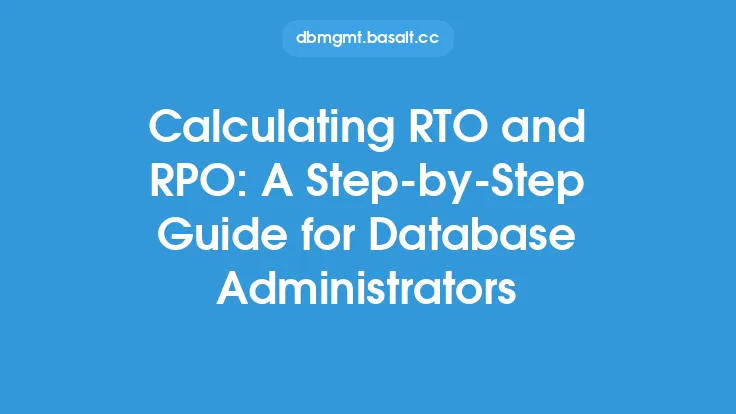Implementing a database schema is a crucial step in the development of any database-driven application. It involves translating the conceptual design of the database into a physical implementation that can be used to store and manage data. In this article, we will provide a step-by-step guide on how to implement a database schema, covering the key concepts, techniques, and best practices involved in the process.
Introduction to Database Schema Implementation
Database schema implementation is the process of creating the physical structure of a database, including the tables, indexes, views, and relationships between them. It is a critical step in the database development lifecycle, as it determines how data will be stored, retrieved, and manipulated. A well-designed database schema is essential for ensuring data consistency, reducing data redundancy, and improving query performance.
Pre-Implementation Steps
Before implementing a database schema, several pre-implementation steps need to be taken. These include:
- Reviewing the database design document to ensure that all requirements have been met
- Identifying the database management system (DBMS) that will be used to implement the schema
- Creating a database instance and setting up the necessary database parameters
- Defining the database user accounts and permissions
- Creating a backup and recovery plan to ensure data safety and availability
Creating Database Tables
Creating database tables is a critical step in the schema implementation process. Each table should have a unique name, and its structure should be defined using the following elements:
- Columns: These are the individual elements of data that are stored in a table. Each column should have a unique name, data type, and length.
- Data types: These define the type of data that can be stored in a column, such as integer, string, or date.
- Primary keys: These are unique identifiers for each row in a table, used to ensure data consistency and prevent duplication.
- Foreign keys: These are used to establish relationships between tables, enabling data to be linked and queried across multiple tables.
Defining Table Relationships
Defining table relationships is essential for establishing the connections between different tables in a database. There are several types of relationships that can be defined, including:
- One-to-one (1:1) relationships: These occur when a single row in one table is related to a single row in another table.
- One-to-many (1:N) relationships: These occur when a single row in one table is related to multiple rows in another table.
- Many-to-many (M:N) relationships: These occur when multiple rows in one table are related to multiple rows in another table.
Creating Indexes and Views
Indexes and views are database objects that can be used to improve query performance and simplify data access.
- Indexes: These are data structures that improve query performance by providing a quick way to locate specific data. There are several types of indexes, including clustered indexes, non-clustered indexes, and unique indexes.
- Views: These are virtual tables that are based on the result of a query. They can be used to simplify complex queries, provide an additional layer of security, and improve data accessibility.
Implementing Data Constraints
Data constraints are rules that are used to ensure data consistency and prevent invalid data from being entered into a database. There are several types of data constraints, including:
- Primary key constraints: These ensure that each row in a table has a unique primary key value.
- Foreign key constraints: These ensure that relationships between tables are valid and consistent.
- Check constraints: These ensure that data entered into a column meets specific conditions, such as being within a certain range or matching a specific pattern.
- Default constraints: These provide a default value for a column when no value is specified.
Testing and Validating the Schema
Once the database schema has been implemented, it is essential to test and validate it to ensure that it meets the requirements and is free from errors. This involves:
- Creating test data and running queries to verify that the schema is working as expected
- Checking for data consistency and integrity
- Validating the performance of the schema, including query execution times and data retrieval efficiency
- Identifying and fixing any errors or issues that are encountered during testing
Deploying the Schema
After the schema has been tested and validated, it is ready to be deployed to a production environment. This involves:
- Creating a backup of the schema and data
- Exporting the schema and data to a file or script
- Importing the schema and data into the production environment
- Configuring the database parameters and settings for the production environment
- Testing the schema and data in the production environment to ensure that it is working as expected.
Conclusion
Implementing a database schema is a complex process that requires careful planning, design, and testing. By following the steps outlined in this article, database developers and administrators can create a well-designed and functional database schema that meets the needs of their application and users. Remember to always follow best practices, test and validate the schema thoroughly, and deploy it to a production environment with caution.





